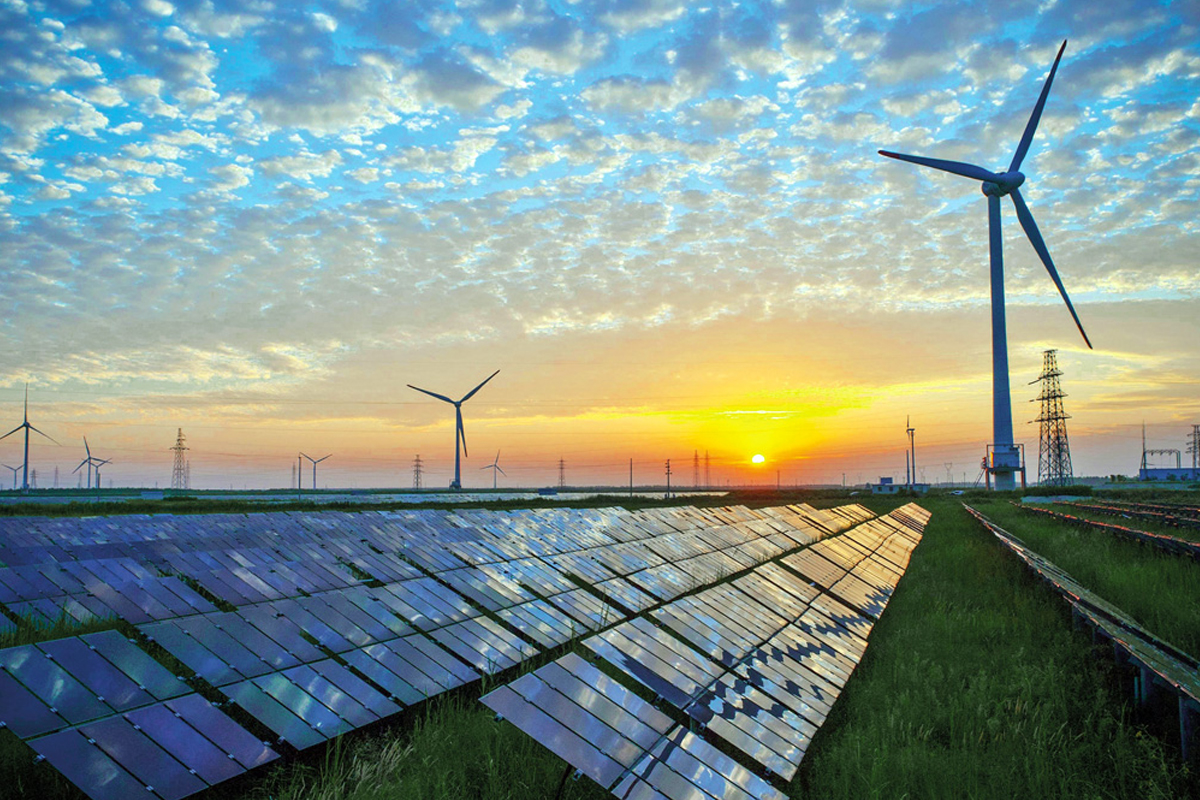
A low-carbon model of the energy transition and GDP dynamics was developed, and pilot calculations and scenarios for the transition to a low-carbon economy model were carried out for five countries (Denmark, Portugal, Kazakhstan, India, Turkey).
The UN Paris Climate Agreement, which entered into force on November 4, 2016, set the goal of keeping global warming within 1.5–2°C. This is possible only if by 2040-2050. the so-called Great Energy Transition will be carried out from the use of currently dominant fossil hydrocarbon fuels (coal, oil and natural gas) to renewable energy sources, when their share in the total energy balance reaches 40% or more.
The situation requires regular updating of strategies to optimize development paths.
As part of this work, among the important research tasks for the implementation of the Megagrant "Technological Challenges and Socio-Economic Transformation in the Conditions of Energy Transitions" in 2022, in accordance with the Research Work Plan, the following are identified:
- Definition of target models of the economy, taking into account the energy transition (low-carbon economy);
- Development, analysis and evaluation of a scenario for the transition to a low-carbon economy model;
To this end, the research group conducted a systematic analysis of 18 main scenarios for the energy transition, which are based on certain models of decarbonization of the economy and energy transitions. All scenarios are similar in recognizing the significant role of hydrogen, the key role of electrification of final energy consumption, the importance of the role of renewable energy sources. Scenario differences relate to the role of bioenergy and CO2 management options (underground storage and use of CO2 for production of materials, fuels, etc.), use of CCS (carbon capture and storage) and biomass, carbon dioxide removal based on land use change and forestry. economy.
The following classes of mathematical models are used to describe the energy transition:
- Climate change models (TIMES model and its modifications).
- Models of equilibrium of economic systems (Computable general equilibrium - CGE) in the context of energy and environmental policy.
- Models of system dynamics (System Dynamics Modeling).
- Macroeconomic module within the framework of a broader model of system dynamics (MEDEAS).
- Energy transition models in Germany using ordinary differential equations and principles of system dynamics; (This is a multivariate ordinary differential equation diffusion model for the study of the energy transition in Germany and which, in particular, is capable of evaluating the dynamic interdependencies between coal, gas and renewables in the energy market).
- Renewable energy transition models using pymedeas, a new open source energy system model.
- Models of energy transitions are also being developed by Russian scientists - A.A. Makarov, Yu.A. Plakitkin, A.M. Tarko.
The models reviewed differ in that market "problems" and other determinants of consumer behavior are not taken into account, and n, as well as actions and reactions within broader decision-making.
On this basis, the scientific team developed the theoretical foundations for building their own low-carbon mathematical model of the energy transition. The low-carbon model of energy transition and GDP dynamics developed by the research team has the following distinctive features:
- its non-linear and dynamic nature;
- the principle of stabilizing global per capita energy consumption;
- symbiosis of the use of nuclear, hydrogen energy and renewable energy sources as the most realistic scenario for the implementation of the global energy transition;
- taking into account the demographic factor, as one of the key ones, when determining energy transition scenarios;
- taking into account energy efficiency technologies in the formation of decarbonization scenarios.
Based on the proposed model, pilot calculations were carried out and various scenarios for the transition to a low-carbon economy model were identified, including planning for the reduction of CO2 emissions on the horizon up to 2100 for five countries (Denmark, Portugal, Kazakhstan, Turkey, India). The choice of countries for verification of the developed model was carried out based on the following considerations:
- they should represent different geographic regions and be in varying degrees of dependence on Russian energy supplies;
- each country should have its own decarbonization strategy;
- in the energy balance of these countries there should be a different compositional component for primary energy sources in the energy balance;
- the presence of a different regulatory framework for the implementation of decarbonization programs.
Denmark and Portugal, being members of the European Union, subordinate their decarbonization strategies to the general decisions of the European Union. Turkey independently forms its energy strategy, but depends on external energy supplies (Russia, Kazakhstan, Azerbaijan). India does not depend on Russian energy supplies, biomass plays a large role in primary energy consumption, and all electricity is produced through the use of coal. Kazakhstan is fully provided with its own energy sources, but about 75% of electricity is produced by coal.
As a result of the work carried out, the following conclusions were obtained:
The global energy transition from currently dominant fossil hydrocarbons to the predominant use of renewable energy, when their share in the total energy balance exceeds 40%, can take place in the 2060s, but only under the following conditions:
in the case of the implementation of the ambitious renewable energy distribution scenario REmapCase from IRENA and the energy scenario Unfinished Symphony from the WREC, related to the development of nuclear power plants.
At the same time, the share of nuclear energy in the total energy balance should increase from the current 4.9% to 13.5%.
Only the symbiosis of renewable energy sources and nuclear power plants with nuclear reactors of small and medium power of the latest generation will make it possible to sufficiently displace and replace hydrocarbons to achieve climate security without harming the economy.
Without the dynamic development of nuclear power as a low-carbon source of generation that provides the base and peak needs necessary to create a stable and sustainable energy system, the global energy transition is impossible.
The energy transition modeling approach, as well as the scenarios developed on its basis for individual countries, proposed by the project research team, will be reported and discussed at the following events:
Joint Kazakh-Russian seminar "Technological and economic barriers to the decarbonization of the economy", September 19-20, 2022, Astana, Kazakhstan;
International conference "Models, scenarios, materials and technologies for the green transition" (Green Transition Landscape: models, scenarios, materials and technologies) (GT-2022)), December 13-14, 2022, St. Petersburg, RF;
and will also be discussed and clarified with experts in energy transition issues as part of the training by members of the scientific team on the topic "Technological, social and economic factors in the development of the energy sector in the context of energy transitions", November 28 - December 9, 2022.



